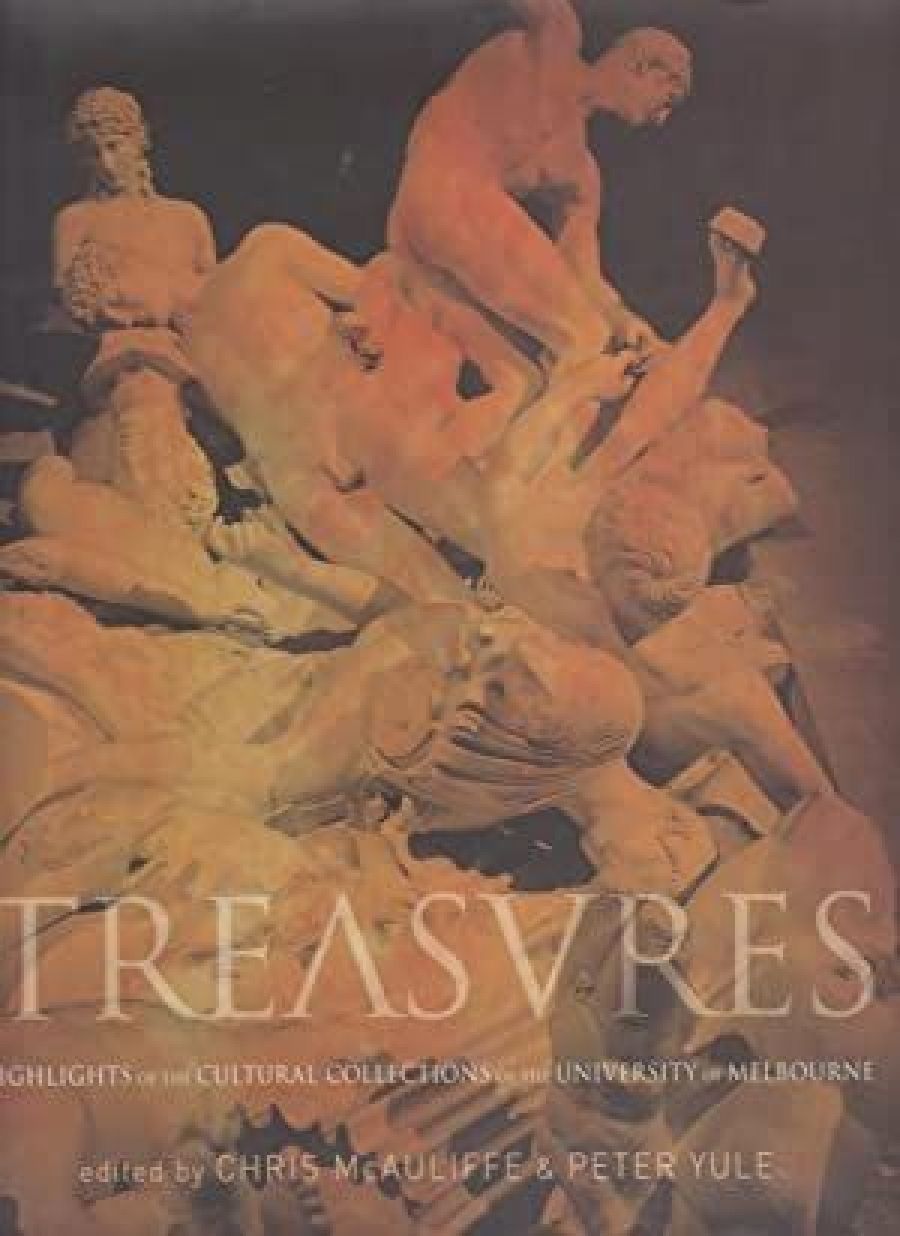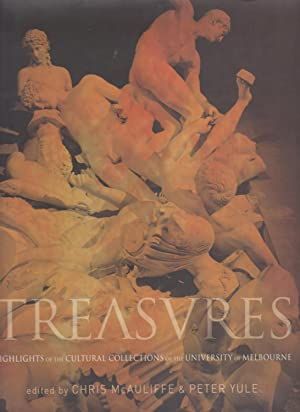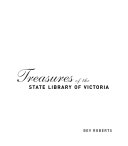
- Free Article: No
- Contents Category: Reference
- Review Article: Yes
- Article Title: Riches in Diversity
- Online Only: No
- Custom Highlight Text:
Major events in histories of public institutions – museums, galleries, libraries and universities – lend themselves to publications that acknowledge and celebrate openings, building extension projects and anniversaries. This year marks the sesquicentenary of the State Library of Victoria (SLV), which, with the completion of its massive building extension project in 2003, is now able to present a souvenir book on the collections. While this is in no manner a catalogue of the library’s collection, it does serve as a guide and as a useful primary source for seeking the more unusual items – the treasures.
- Book 1 Title: Treasures
- Book 1 Subtitle: Highlights of the Cultural Collections of the University of Melbourne
- Book 1 Biblio: Miegunyah Press, $120 hb, 315 pp
- Book 1 Cover Small (400 x 600):

- Book 1 Cover (800 x 1200):

- Book 2 Title: Treasures of the State Library of Victoria
- Book 2 Biblio: Focus Publishing, $49.95 hb, 176 pp
- Book 2 Cover Small (400 x 600):

- Book 2 Cover (800 x 1200):

A section on photographs reminds us that the SLV was founded only nineteen years after the invention of photography in 1835, coincidentally the same year that Melbourne received its first white settlers. It also reminds us that the SLV’s current interest in keeping up to date with technology was present at the outset. Photography as documentary image featured in the library’s early acquisitions, from 1860, and its representation in the collections has continued.
Any library, however, is judged by the quality of its books. Here a few tantalising portions of this rich collection are shown, from the eleventh-century manuscript of Boethius’s De Musica and a wealth of illuminated manuscripts and incunabula, to the splendid nineteenth-century holdings, private press books of the late nineteenth and early twentieth centuries as well as twentieth-century artist books.
The author have set themselves the task of placing the collections in historical context, with specific references to selected items, frequently with numerous illustrations per page. Inevitably, in a publication of this nature, the text leaves the reader wishing for more detail and information on individual items. However, each chapter is accompanied by a bibliography of further reading, much of it written by SLV staff. As such, Treasures forms an attractive introduction to the vast and wide-ranging SLV collections and will prove useful for researchers by providing access to objects not easily found in electronic catalogues.
Perhaps the solution to providing an image and information on a diverse range of objects is more suited to the standard format of image and text, over a double-page spread, which has been adopted by many museums for similar exhibition catalogues and collection highlights. The approach has been used by two other recent Australian publications of the same name: Treasures from the World’s Great Libraries (National Library of Australia, 2001) and Treasures: Highlights of the Cultural Collections of the University of Melbourne. Although these publications illustrate fewer works per page, they give more in-depth information on the treasures illustrated. It is inevitable and appropriate that the University of Melbourne’s Treasures (published on the occasion of the University of Melbourne’s sesquicentenary) is presented in a scholarly manner, and it is fascinating to be introduced to the range of material owned by the university.
The university collection ranges from Mediterranean antiquities, through European and Australian art, to early Melbourne’s European settlement and the foundation of the university. Decorative arts, musical instruments, architectural drawings, books, another death mask of Ned Kelly, and Percy Grainger (the Grainger Museum is part of the university) are all represented in this handsome publication. The editors have drawn upon a wide range of experts to cover the diversity of material. Introductions to the university and its collections are followed by individual entries arranged in section by period, theme or subject. We are able to see not only the justly vaunted collections of paintings, prints and drawings, and sculpture but also the Dolmetsch viol, manuscripts, books, the Tinsmiths’ Union armour, ceramics ancient and modern, architecture, and clothing worn by Rose and Percy Grainger, including his outrageous towelling costume.
For those interested in Australian collections and in discovering more on the country’s treasures, both books are worth having on the shelves, if only to save the time finding them in the catalogues: a brief search by keyword for ‘treasures’ in the SLV online catalogue reveals 181, and for the University of Melbourne, 174 items.


Comments powered by CComment